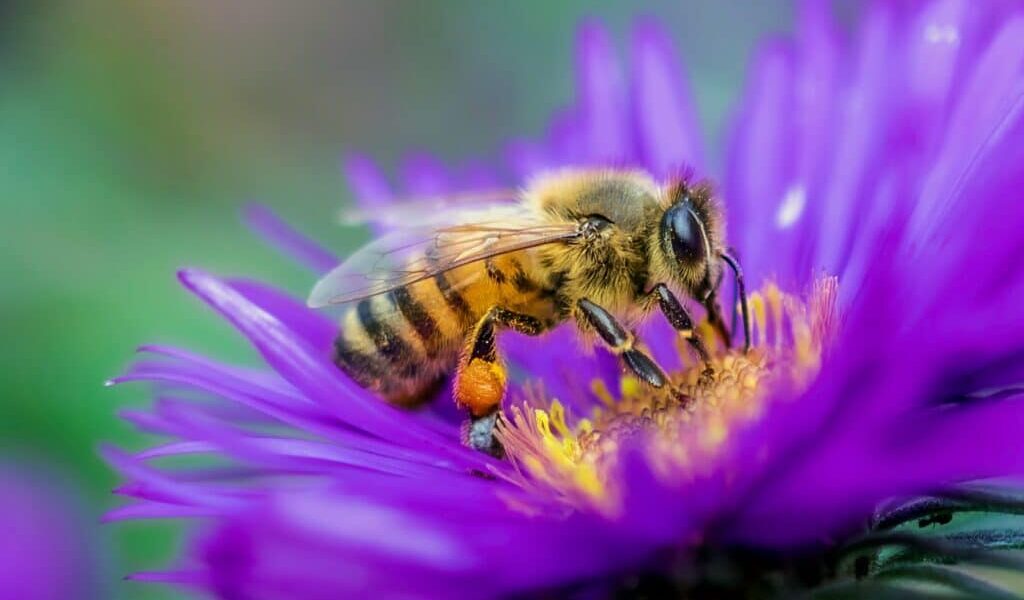The Decline of Pollinators
Although vanilla is perhaps the most prevalent ice cream flavor, vanilla itself is very expensive. This high price is mostly due to the need for hand-pollination, or the manual pollination of a crop. Pollination is when pollen is transferred to the stigma, or the center strand of the flower. This job is often done by pollinators, which includes the likes of bees, moths, butterflies, and hummingbirds. Among the pollinators, bees pollinate the most flowers. However, bee populations have been declining in recent years due to the accumulation of multiple factors: pests, agrochemicals, and habitat loss.
The advent of modern agriculture has brought pesticides and monoculture, which are both contributing to the loss of the bee population. Recently, lands previously occupied by various wild vegetation are being cleared for farm lands. The lack of a diverse selection of flowers has caused some bees to suffer from malnutrition, and the lack of cavities, or holes in the ground, in farm lands have made nesting difficult for many bee species. To make matters worse, many farms use pesticides, which may either kill the pollinating bees or render them disoriented and unable to navigate their way back to their hive. Coupled with pests like Varroa mites, which make bees more vulnerable to other threats, modern agriculture is leading to a decline in the bee population. However, there is no need to panic as this is only a part of the natural process and a new equilibrium will soon be established. In the meantime, there are temporary solutions.
The decline and extinction of a species is a natural process, and there is nothing unusual about us, another species, being the driving force behind an extinction. Throughout the history of Earth, many species have driven others to extinction; in fact, 99.9% of all species that ever lived have gone extinct. As such, history suggests that the extinction of a species is no disaster. Many fear that the loss of bees would lead to a decline in pollination and thus plants. However, not all plants depend on bees to pollinate them; about two thirds of all plants are capable of self-pollination, or pollinating themselves, or are pollinated by the wind. The decline of the bee population may lead to a subsequent decline of plants that are dependent on bees, but the non-bee-dependent plants will be able to fill the gaps because their competitors have declined or disappeared. That is, the surviving plant species will quickly diverge to fill the new ecological niches that the bee-dependent species previously occupied. Concerns about genetic diversity are therefore unnecessary as diversity will be restored over time, and the newly emerged species would not be dependent on bees for pollination and would flourish even without them. Meanwhile, agriculture can also find its equilibrium; scientists could use genetic engineering technology to make previously bee-dependent crops into non-bee-dependent ones.
It is true that the development of new crops may take time. However, there are still ways to pollinate the existing plants. For one, plants can be hand-pollinated. While this technique is labor intensive and expensive, most bee-dependent crops are already expensive; a small increase in the price may not bother most consumers. An example is the vanilla bean, which was mentioned earlier. Despite vanilla being nearly entirely hand-pollinated, and thus expensive, there is a thriving market for it. The cost of hand-pollinating may also gradually decrease as it is more widely adopted because new, more efficient methods will be developed. As for crops that do not have enough profit margin for hand-pollination, bee colonies can be leased from beekeepers. In other words, farmers can pay local beekeepers to station their beehives near their fields. Californian almonds are already dependent on this method, proving its real-life efficacy. Leasing bees has little to no known adverse effects to the surrounding environment and is cheaper than hand-pollination. In addition, the practice can foster the local beekeeping economy, leading to various local benefits.
In spite of these potential solutions, many environmental activists claim that the decline in the bee population is a terrible problem because it hints that our current trend of pesticide use is forcing the environment over a cliff. However, pesticides are not all bad for the environment, despite the popular notion that pesticides are nature’s enemy; they help increase the yield of crops. Ultimately, using pesticides saves land, water, and other natural resources. If pesticides were not allowed, farmers would need to farm on a much larger area of land and use much more water to obtain the same yield. More farm land would mean less wildlife would be left. In addition, a larger tract of cultivated land would emit more carbon because more machinery would be needed to farm it. Allowing pesticides thus allows farms to become more compact and preserves local wildlife. Of course, pesticides do damage insect populations in the short run. However, they are not the environmental culprit that many activists make them seem, especially when the positive effects are put into consideration.
At first glance, the declining population of bees due to pesticides, modernization, and pests may seem catastrophic. However, closer examination reveals that this is just a natural process; an equilibrium will soon be restored as the surviving species fill the biodiversity gaps and modern technology helps engineer new self-pollinating variants of previously bee-dependent crops. In the meantime, hand-pollination and bee leasing can be used to pollinate the existing bee-dependent crops. Pesticides and other modern agricultural practices present us with a big challenge, but they should not be condemned because they have also made modern farming less disruptive to wildlife. This is not to say that bee conservation is irrelevant; while they are still around, it is crucial to find measures to keep them around. However, bee conservation should not be our sole concern. In order to move forwards and secure our agricultural future, we should also look to develop self-pollinating crops and more efficient methods for hand-pollination.



